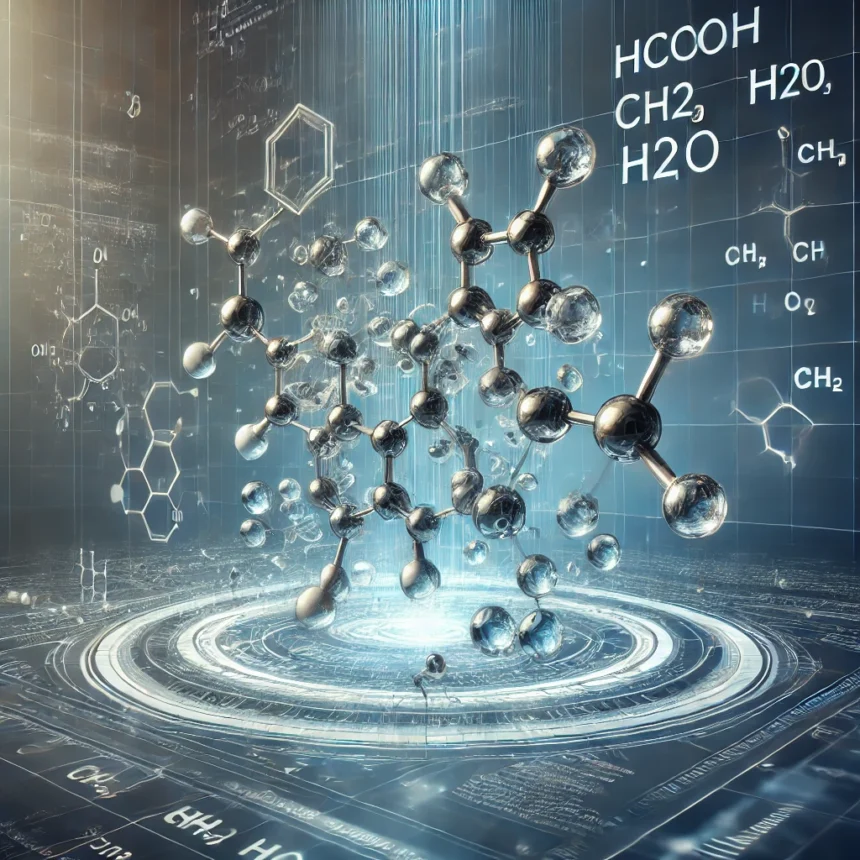Hcooch ch2 h2o represents a combination of chemical compounds that are fundamental in various scientific and industrial applications. These compounds—formic acid (HCOOH), methylene (CH₂), and water (H₂O)—play crucial roles in chemistry, biology, and industry. This article explores their chemical properties, applications, and significance in daily life and industrial processes.
Table of Contents
ToggleHcooch: Understanding Formic Acid (HCOOH)
Hcooch, also known as formic acid, is the simplest carboxylic acid. It is a naturally occurring compound found in the venom of ants, bee stings, and some plants. It has a strong, pungent smell and is highly soluble in water and organic solvents.
Chemical Properties of Hcooch
- Molecular Formula: HCOOH
- Molar Mass: 46.03 g/mol
- Appearance: Colorless liquid with a strong odor
- Boiling Point: 100.8°C
- Acidity (pKa): 3.75, making it a relatively strong organic acid
- Solubility: Fully miscible with water, alcohols, and ether
Uses of Hcooch (Formic Acid)
- Industrial Applications
- Used in the leather industry for tanning hides.
- Acts as a textile dyeing and finishing agent.
- Serves as a preservative in food production.
- Agriculture and Animal Feed
- Used as a feed preservative and antibacterial agent.
- Helps in silage preservation by preventing bacterial growth.
- Chemical Synthesis
- A precursor for methanol, formaldehyde, and other organic compounds.
- Used in pharmaceutical synthesis.
- Fuel Cells and Energy Production
- Used in Direct Formic Acid Fuel Cells (DFAFCs) as a source of clean energy.
- Natural Occurrence and Biological Role
- Found in ants and stinging insects as a defense mechanism.
- Plays a role in biochemical reactions in some microorganisms.
Ch2: Understanding Methylene
Ch2, known as the methylene group, is a highly reactive intermediate in organic chemistry. It exists as a transient species and participates in various reactions.
Chemical Properties of Ch2
- Molecular Formula: CH₂
- Structure: A carbene intermediate with two unpaired electrons.
- Reactivity: Highly reactive due to the presence of an unpaired electron.
- Existence: Short-lived and usually stabilized in a chemical reaction.
Uses of Ch2 (Methylene)
- Polymer Industry
- Involved in the production of polyethylene, the most common plastic material.
- Organic Synthesis
- Plays a role in cyclopropanation and other chemical transformations.
- Used in pharmaceutical and material science research.
- Intermediary Role in Chemistry
- Helps in forming more complex organic structures.
- Used in radical reactions for chemical modifications.
H2o: The Essential Role of Water
H2o, or water, is one of the most important molecules for life and industrial processes. It serves as a universal solvent, a cooling agent, and a crucial element in chemical and biological reactions.
Chemical Properties of H2o
- Molecular Formula: H₂O
- Molar Mass: 18.015 g/mol
- Boiling Point: 100°C at 1 atm
- Polarity: Highly polar, allowing it to dissolve many substances.
- Hydrogen Bonding: Gives water its unique properties such as high surface tension and heat capacity.
Uses of H2o (Water)
- Biological Importance
- Essential for all known forms of life.
- Acts as a solvent for biochemical reactions in cells.
- Involved in metabolic processes such as hydrolysis.
- Industrial Applications
- Used in cooling systems, power plants, and manufacturing processes.
- Acts as a solvent in chemical reactions.
- Agriculture and Irrigation
- Essential for crop growth and livestock maintenance.
- Plays a key role in soil hydration and nutrient transport.
- Environmental and Climatic Role
- Regulates Earth’s temperature through the water cycle.
- Contributes to weather patterns, precipitation, and climate regulation.
Read also: TitaniumInvest.com Consulting: Expert Investment and Business Advisory
Conclusion
Hcooch ch2 h2o represents three important chemical substances—formic acid (HCOOH), methylene (CH₂), and water (H₂O). These compounds have diverse properties and play crucial roles in chemistry, biology, and industry. While formic acid is valuable in agriculture, chemical production, and energy storage, methylene is a key intermediate in organic reactions. Water, on the other hand, remains the most vital substance for life and industrial applications. Understanding these molecules helps in utilizing them effectively in various scientific and practical fields.







